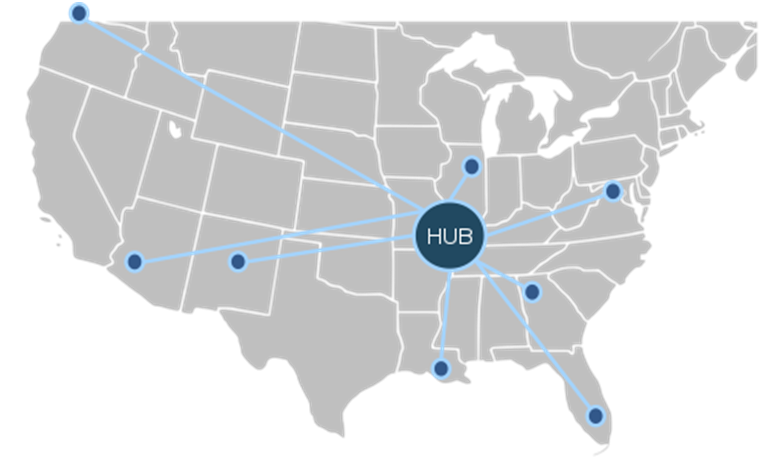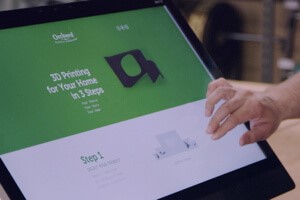
Charles R. Goulding and Adam Friedman examine the potential for 3D printing in hub and spoke logistics.
Many of today’s leading manufacturing and distribution center companies use hub and spoke (H&S) logistics model. In this model, the main manufacturing or distribution system is at the center, acting as the “hub”, and surrounded by typically smaller distribution sites or specialized product manufacturing locations, which act as the “spokes”. These spokes are also commonly referred to as satellites.
From a logistical standpoint, the hub and spoke provides for greater access to spoke locations from hubs compared to that of a point-to-point model. The hubs are centrally located to each spoke so that the distance from the hub to any given spoke is always shorter than even the shortest distance between spokes.
Wal-Mart is an example of a high market capitalization American company that has successfully implemented the H&S model. In their model, Wal-Mart has centralized rural hub facilities that order and then organize inventory before they are distributed to stores within a 150 mile radius of the hub. All of the trucks that leave the hub facility are fully stocked with inventory, making the company more efficient and profitable.
3D Printing and the H&S Model
For the same reasons that the hub and spoke logistics model benefits businesses, a hub is an ideal location for a 3D printing center. 3D printing typically involves many components that need to be ordered, stockpiled, and shipped upon demand, often from a remote 3D printing dedicated location.
Using an H&S model, the majority of inventory is stored at a centralized hub and satellites depend on the hub to produce inventory that is high in demand, critical, hard to find, slow-moving or even obsolete. Satellites can parlay their demand orders to the hub location, where the hub can analyze how to most effectively meet the particular demand of each site. Additionally, the hub can pool its high-demand resources not only from inside the hub but also from other satellite locations to maintain a large inventory at the central location.
Orchard Supply Hardware

A prime example of 3D printing being integrated into an H&S model is at Orchard Supply Hardware stores, owned by the Lowe’s Corporation.
Orchard Supply Hardware stores have locations throughout California and Oregon with 3D printer kiosks powered by Authentise. Using these kiosks, customers can make any 3D printed object from their 3D system. The hub for the independent 3D printing sites is located at California, and central to all spoke stores throughout California and Oregon.
Logistics on supplies and maintenance for the machines is coordinated by Singularity University. The company estimates the hub and spoke model will enable spoke stores to print tens of thousands of 3D objects monthly and the hub will be able to transport 3D printing components back and forth to the spokes for maintenance and replacement of the parts.
The Research and Development Tax Credit
The Research and Development Tax Credit Enacted in 1981, the now permanent Federal Research and Development (R&D) Tax Credit allows a credit that typically ranges from 4%-7% of eligible spending for new and improved products and processes. Qualified research must meet the following four criteria:
- Must be technological in nature
- Must be a component of the taxpayer’s business
- Must represent R&D in the experimental sense and generally includes all such costs related to the development or improvement of a product or process
- Must eliminate uncertainty through a process of experimentation that considers one or more alternatives
Eligible costs include US employee wages, cost of supplies consumed in the R&D process, cost of pre-production testing, US contract research expenses, and certain costs associated with developing a patent. On December 18, 2015, President Obama signed the PATH Act, making the R&D Tax Credit permanent. Beginning in 2016, the R&D credit can be used to offset Alternative Minimum tax for companies with revenue below $50MM and, startup businesses can obtain up to $250,000 per year in payroll tax cash rebates.
Conclusion
The hub and spoke model is an important business concept and has been proven to be efficient in controlling the flow of products while realizing significant cost savings. The 3D printing industry can benefit greatly from the H&S model, and by optimizing the logistics by identifying where the center of operations needs to be located.
